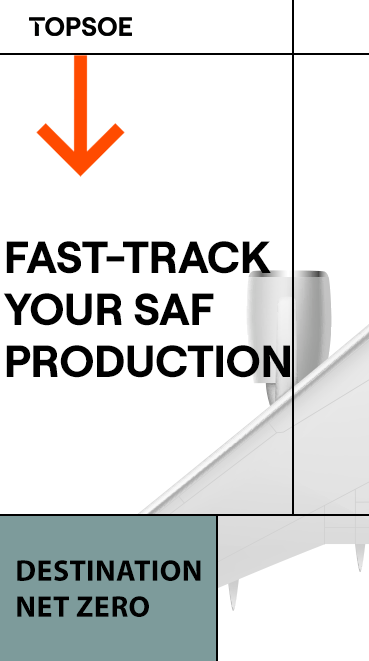AFPM’s ‘Greatest Hits of 2020’
- Ron Kotrba
- Dec 29, 2020
- 4 min read

As we wind down 2020, which will undoubtedly be remembered in the history books as a most memorable year, I thought it appropriate to revisit what I am calling one of American Fuel & Petrochemical Manufacturers’ “Greatest Hits of 2020.”
As you queue up this oldie-but-goodie from way back in September 2020 on your HiFi, prepare yourself to listen to the groovy sounds of the jive spin ‘round n’ ‘round!
The title of this lil’ ditty is the one and only, “A Gallon ‘Waived’ is Not a Gallon ‘Lost.’”
………………………………………………………………………………………………………
A Gallon ‘Waived’ is Not a Gallon ‘Lost’
Sept. 2, 2020
By AFPM Communications
Facts About Small Refinery Exemptions
Congress designed the Renewable Fuel Standard (RFS) with an explicit directive for EPA to maintain relief lifelines for small refineries. Lawmakers recognized that RFS compliance costs had potential to be a source of disproportionate economic harm and that small refineries should be shielded from this because of the essential role they play in America’s regional fuel markets. In the early years of the program, Congress exempted all small refineries from the RFS and the law remains clear that EPA can grant qualifying facilities a complete exemption from RFS obligations, and that facilities may submit petitions for such relief “at any time.”
Small refinery exemptions (SREs) have been part of the fabric of RFS since day one and experts from the United States Energy Information Administration (EIA), academic institutions and the USDA agree they have not reduced total ethanol blending. Ethanol is blended into nearly all gasoline sold in the United States. RFS obligations don’t change that fact. They simply require one party, refineries, to spend money proving that inevitable blending has taken place.
“Most of the macroeconomic issues we’ve had with ethanol this year have been because of lower exports, not small refinery waivers.” - U.S. Agriculture Secretary Sonny Perdue
“Ethanol demand has not been impacted by the small refinery program.” – EPA Administrator Andrew Wheeler
“Analysis of data on ethanol and gasoline consumption in the U.S. shows there is little if any evidence that the blend rate for ethanol has been reduced by SREs.” – Scott Irwin, University of Illinois
Understanding “Gap Year” Waivers
The refining industry is under immense financial pressure this year and the additional weight of multi-billion-dollar RFS compliance costs is untenable.
Two conflicting rulings from the 10th Circuit Court of Appeals — one from 2017 and one from 2020 — have created mass confusion about eligibility for the small refinery relief program. A plain read of the law has always suggested there are two factors necessary for eligibility:
That a facility be “small” (meaning 75,000 barrels or fewer of crude oil are processed daily); and
That a facility is able to show EPA that its RFS obligation is a source of disproportionate economic harm.
On the matter of economic harm, the 10th Circuit Court of Appeals ruled in 2017 that EPA was unlawfully redefining “hardship” by imposing a heightened “viability” threshold. Basically, if a refinery wasn’t on the brink of closing, EPA denied them RFS relief. The court found that EPA “exceeded its statutory authority” in withholding waivers based on this rationale. The ruling added that “as a matter of textual exegesis, ‘hardship’ is something that ‘makes one’s life hard or difficult — not just something that makes continued existence impossible.’”
Three years after the ruling admonishing EPA for being too stingy with small refinery relief, the 10th Circuit threw another curve ball. In January 2020, the court constructed a third, brand new qualification: for small refinery RFS relief: a facility must have been granted a small refinery exemption every year since 2010 to remain eligible for future help. The ruling revealed a 10th Circuit at odds with itself.
As legal challenges to the latest ruling are underway, some facilities have submitted “gap year” requests, petitioning EPA to consider their cases for compliance-based hardship incurred in previous years. It is an effort to keep intact the possibility of seeking future relief while the 10th Circuit’s latest ruling is reviewed.
The Overstep of Reallocation
Though small refinery relief has not curtailed ethanol consumption at all in the United States, EPA is still being pressured to inflate annual RFS obligations to “make up” for past waivers. But there are no “lost” volumes to reallocate.
Assuming that a “gallon waived” under RFS means that a gallon of biofuels wasn’t blended is just plain wrong. There is no 1:1 correlation between RFS obligations “waived” and ethanol gallons blended.
Fuel suppliers blend as much ethanol as consumers are willing to buy and as infrastructure can safely handle. Increasing RFS obligations through reallocation affects neither of those factors. Reallocation will simply increase compliance costs by driving up the trading price of RINs (RFS compliance credits that refineries must submit to EPA). It will also lead to imports of expensive foreign biodiesel that will replace affordable, American-made petroleum diesel. These costs come at the expense of refinery jobs, industry growth and global competitiveness.
Individual refineries are the obligated parties under the RFS. If an individual refinery is exempted from having to submit RINs to the EPA because of demonstrated hardship, the government cannot transfer their obligation to other parties. Reallocation is illegal on its face.






















-RKstandin.jpg)
_gif.gif)




